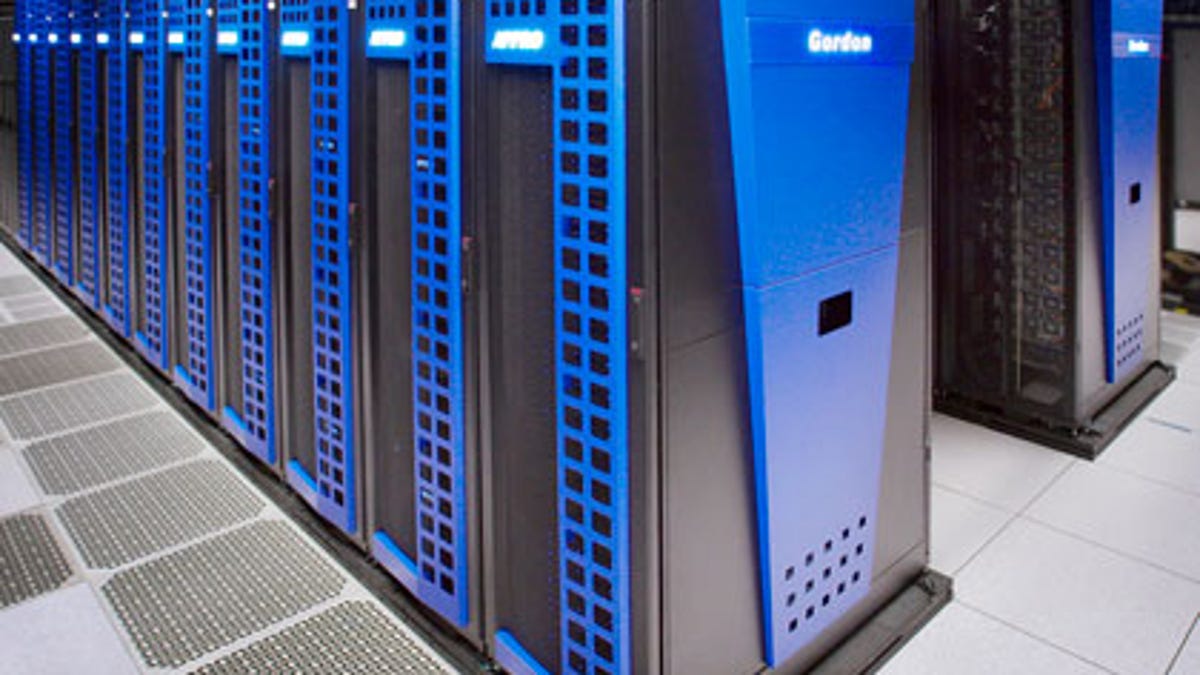Supercomputer 'Gordon' runs on flash memory
The San Diego Supercomputer Center has built a supercomputer that uses flash memory extensively to improve its performance on data-heavy problems such as analyzing genomes.

It's a thumb drive with the size and power of a supercomputer.
The San Diego Supercomputer Center in January will start the engines on Gordon, a supercomputer that uses flash memory extensively to handle massive amounts of data. Using flash as an integral building block means the supercomputer will crank through data-intensive problems, such as analyzing human genomes, 10 times faster than traditional designs.
The idea for using flash memory was shunned by commercial companies, San Diego Supercomputer Center officials told Wired. But they were able to convince the National Science Foundation about three years ago to invest the $20 million in the novel design. It's part of a trend in supercomputing to use alternate components, such as cell phone processors and now memory, to improve performance for specific applications or to lower power consumption.
Gordon, which is named after the 1950s Flash Gordon science fiction hero, has 300 terabytes of flash memory, which is thousands of times more than a tablet or cell phone. With 64 terabytes of RAM, the supercomputer could ingest the entire Netflix streaming movie catalog at 220 movies per second and still have room for more, according to the San Diego Supercomputer Center.
The system is designed with "supernodes" of shared memory, an architecture that gives the computer outstanding I/O performance. Gordon set the record with 36 million input/output operations per second.
Researchers hope that it will be a powerful tool for genetic research, such as mapping genomes for personalized medicine, or creating models for climate change. "Every year we double the amount of information being generated, and we now are being overwhelmed by the data we are able to produce with our own computers. So it stands to reason that we needed a new kind of computer," San Diego Supercomputer Center director Michael Normal said in a statement.
Gordon is no slouch in the compute power department either with performance of 280 teraflops, or floating point operations per second. Gordon ranks 48 on the Top 500 list of supercomputers.
The flash-heavy computer also fares well in power consumption, which has become one of the primary barriers to higher computing rates. Among the Top 500 list, its megaflops per watt rating is higher than average.

